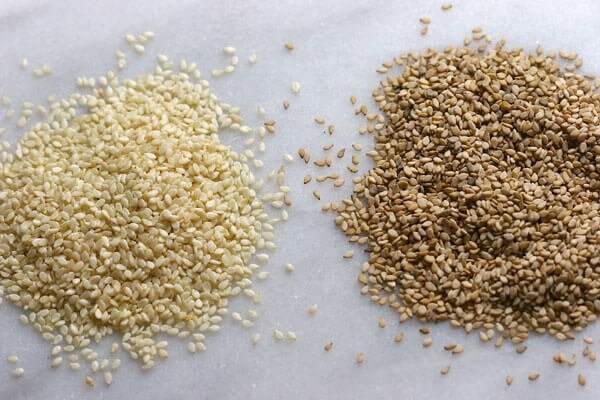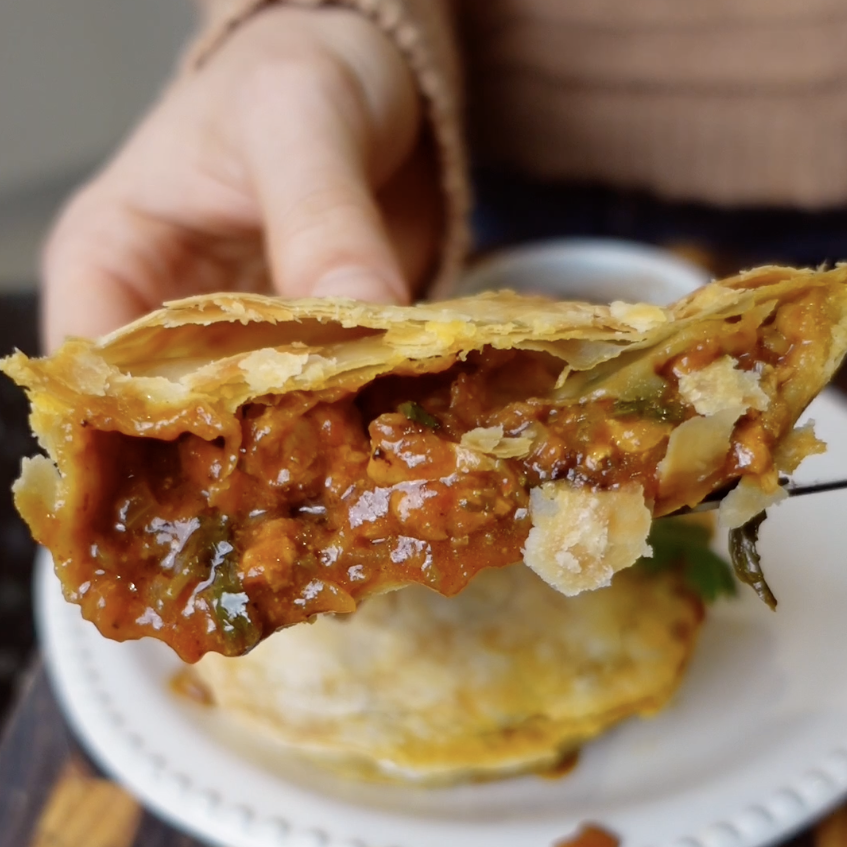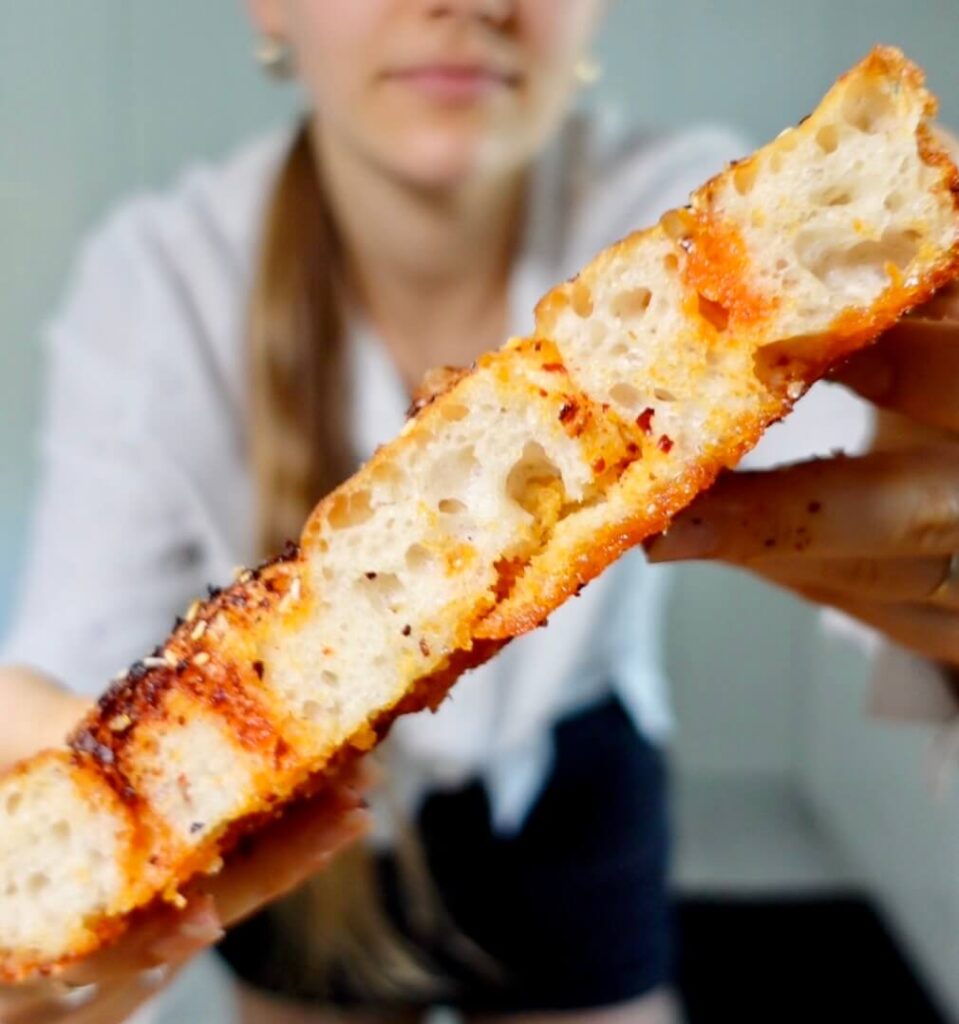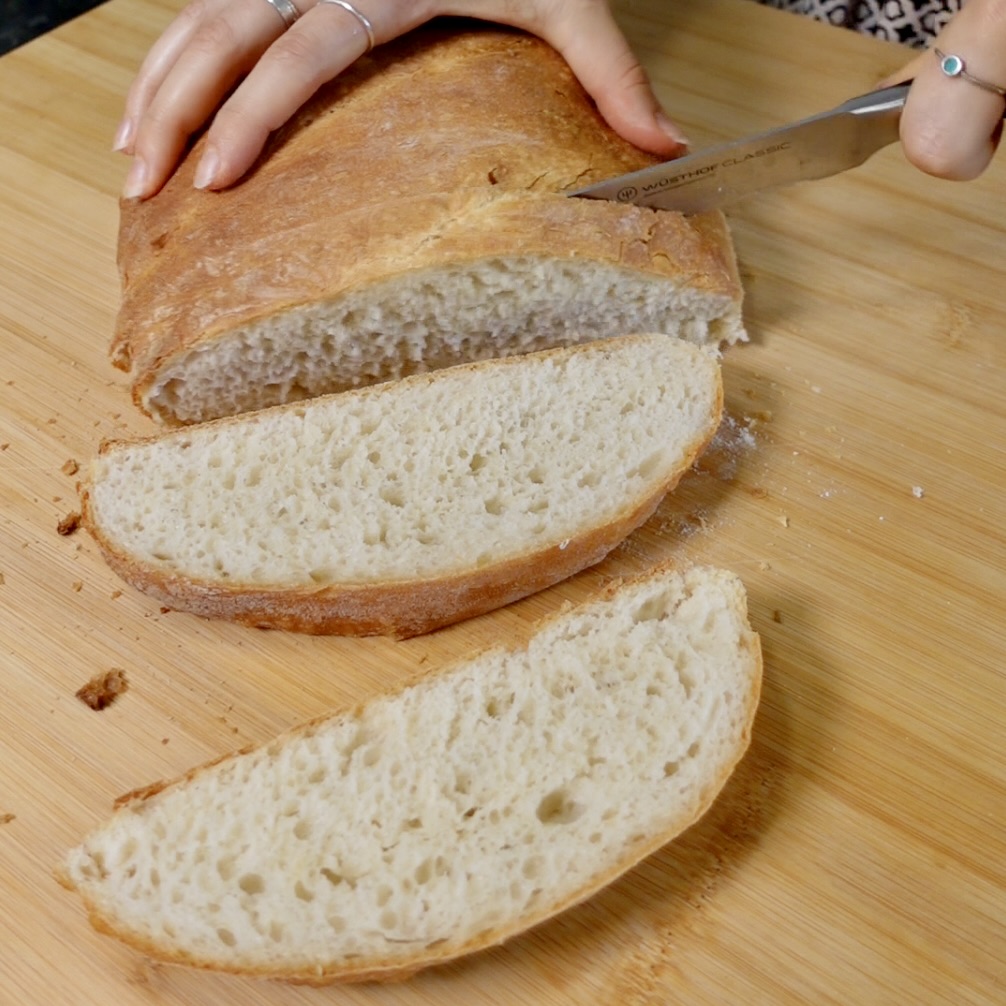
The Easiest Hummus Recipe with Tinned Chickpeas
...plus, tips on how to fix it when things go wrong
If you love hummus as much as I do but have never made it at home before, I urge you to give it a go! It is so simple to make and really only requires you to throw a few things into a blender and turn it on. And what’s even better is it’s so much cheaper than buying it in store or restaurant and in my opinion, tastes much better too!
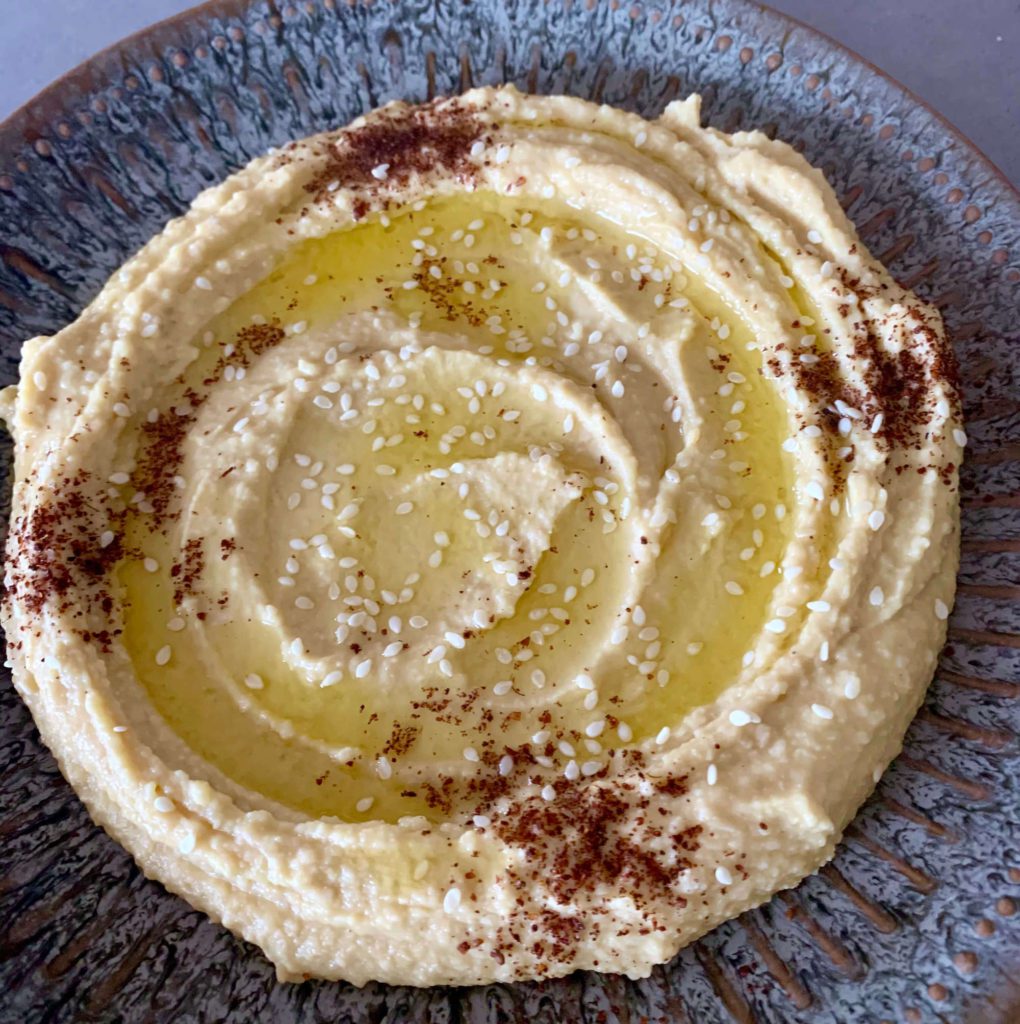
Table of Contents
How Do You Make Hummus at Home That is Better Than Store Bought?
To make hummus at home, all you need is a blender or food processer and a handful of ingredients. It is my absolute favourite recipe to make with canned chickpeas and I often make up a big batch of hummus when I’ve got quite a few tins taking up space in the cupboard! You will need one specialty ingredients for hummus however, that being tahini.
What Is Tahini and Can I Make Hummus Without It?
Tahini is a paste made of roasted, hulled sesame seeds. It is made in the same way as any other nut butter but has a very unique taste. Tahini is quite bitter and savoury compared to it’s fellow almond or cashew butters and is significantly runnier due to sesame seeds’ high oil content.
It is used heavily in Middle Eastern and Mediterranean cuisines, either served by itself or in dressing and dips like baba ghanoush or in our case, hummus.
Can I Make Hummus Without It?
Look, technically you can, but in my opinion it just isn’t the same without it. If you aren’t a fan of tahini and are worried about it ruining the flavour of your hummus, think about an ingredient like salt or vinegar – no one actually likes eating them on their own, but we all do day in day out in other things because of they way they improve the flavour of the dish.
What Can I Use Instead of Tahini if I Don’t Have Any?
If you want to make hummus but just don’t have tahini on hand or can’t find it where you live, here are a couple of substitutes:
- Try using a natural nut butter with a few drops of sesame oil. This will give it the texture and consistency it needs, plus the smoky, nutty flavour of tahini from the sesame oil.
- Greek yoghurt – as tahini has quite a sour, bitter flavour, Greek yoghurt is somewhat comparable in taste to it (I emphasise somewhat). It obviously wont taste exactly the same, but if you’re desperate for a substitute, it might just surprise you.
- Leave it out – obviously it wont taste quite the same, but I have made it before without it and it does still taste good… Just in a slightly different way. This is sort of like saying, “can I make bolognaise without mince?” Well you can, but then it’s technically called something else (Napoli, if you were wondering). Tahini gives hummus a unique flavour, smoothness and a rich texture and without it, it’s still tasty, just not entirely hummus anymore.
- DIY tahini – if you have a bunch of sesame seeds on hand but no tahini, you could try your hand at making your own! You will need a pretty powerful blender for this but all you need to do is blend lightly toasted sesame seeds until they liquify, about 3 minutes.
What Ingredients Do I Need to Make Hummus at Home?
To make hummus at home, you only need the following ingredients:
- Tinned Chickpeas
- Lemon
- Garlic
- Tahini
- Salt
- Olive Oil (optional)
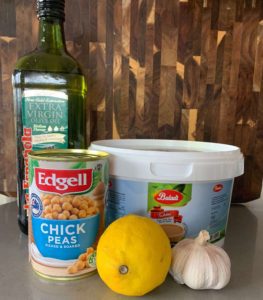
Hummus vs Hommus vs Humus vs Houmous... Is There Any Difference?
Nope, they’re all the same thing just different spellings. The most common spelling and the one that is noted in the Oxford English Dictionary however, is Hummus. Fun fact; hummus is also the Arabic word for chickpea.
STORAGE INSTRUCTIONS
How Long Will Homemade Hummus Last in the Fridge?
The best way to keep homemade hummus is in the fridge in an airtight container. It is recommended to store it no longer than 5-7 days, however I usually find mine lasts up to 10-14. This will vary quite a lot depending on the temperature of your fridge, how often you open the door, and even what else you have in the fridge. It is important to learn the signs of spoiling food to prevent getting sick if you eat it past its prime and to prevent food wastage if you throw it out before you needed to.
How Can I Tell if My Hummus Has Gone Bad?
The 2 main ways you’re going to tell if your hummus has spoiled is by look and smell. If your hummus begins to develop a sour, unusual sort of smell, this is a clear indication that it is beginning to ferment and mould development is imminent. Fermentation in food isn’t always a bad thing when in a controlled environment (think kimchi or sauerkraut), but when you are not planning on it, it is best not to take the risk, and instead, cut your losses and throw it away.
The signs to look out for with spoiled hummus is mould development on the surface which can appear in the form of changes in colour (black, pink, blue, green, white or yellow), fuzzy growths or sliminess. Although there are some foods where you can simply cut off the mould and eat the uninfected areas, this is not the case with hummus! By the time the mould has developed enough to show visually on the surface, it is more than likely that the entire container is contaminated. In this case again, don’t take the risk and just throw it out.
Can I Store Hummus in the Freezer Instead?
You absolutely can store hummus in the freezer and is actually a great option if you make a large batch that you aren’t going to get through in a week. The flavour and texture does change slightly, but thankfully not a whole lot. The process of freezing is much the same as refrigerating; simply place is into an airtight, freezer safe container and place it on a level surface in the freezer. You can store it in either one large batch, or many smaller, single-serve portions, depending on what you prefer. The hummus will keep nicely for up to 6 months. Although it’ll still be safe to eat after 6 months, the flavour will start declining and getting a bit of freezer burn, so I wouldn’t recommend any longer than that.
How Do I Store Frozen Hummus?
When you’re ready to eat it, the best way to bring frozen hummus back to temperature is by placing it in the fridge the day before you’re planning on eating it. If you’ve left it too late and need it thawed quicker than that, place the container in a sink filled with warm to hot water and leave it to do it’s thing for a few hours. You might find that there’s a layer of liquid on top of your hummus now that it has thawed. This isn’t an issue and it just means it has separated slightly, so just give it a stir to reincorporate it. Another, even more last minute option, is to microwave it. A good way to go about it is to first microwave for a minute (for a large batch), then in 20-30 second intervals, stirred in between until it is warmish or at your desired temperature.
WHEN HUMMUS GOES WRONG, WHAT DO I DO?
I’ve addressed some of the most common issues that occur when making hummus and easy ways to fix them so you can have perfect hummus everything!
Why is my Hummus Chunky and Grainy?
In most cases, grainy hummus will be due to the chickpeas not being ground finely enough to form a smooth paste. This can happen if your blender isn’t very powerful, or if there is too much or too little in your food processor (too much and it might get jammed, too little and there won’t be enough contents for the blades to properly connect with the ingredients).
I have never had an issue with my hummus being lumpy when I use chickpeas straight from the tin and I use either a my NutriBullet 900 or my Braun MultiQuick 9. If you’re finding that you just can’t get a silky smooth batch no matter how much you make, it might be a good idea to give your chickpeas a boil before blending them. Here’s how you’d do it;
- In a large enough saucepan, add the chickpeas along with their juices plus enough water to cover them by a few centimetres (this quantity doesn’t really matter as you’ll be draining then anyway).
- Add a tsp of salt and 1/2 tsp baking soda and boil the chickpeas for around 10 minutes or until they’re super soft and mushy (test this by squashing them with a fork – they should break down to a paste with very little resistance).
- Drain the chickpeas, again reserving the cooking liquid, and continue with the recipe. Remember than you won’t need to add as much liquid as the chickpeas have already absorbed quite a bit of water so just be mindful of this.
Why is my Hummus So Thick and Dry?
If your hummus is dry, this is easily due to there not being enough liquid. It’s hard to follow a recipe to a tee and get it exactly the same every single time, especially when you’re using ingredients like lemons which can vary in size, juiciness and sourness; chickpeas which can be drier or different sizes from brand to brand (on even batch to batch); and tahini which can separate (oils from solids) and be thicker or runnier based on whether you’ve stirred it first or not.
All of these can effect the consistency and flavour of the finished product which is par for the course when cooking unfortunately. It’s important to always have extra ingredients on hand when making a recipe so you can adjust if needed. If your hummus is dry however, all you need to do is add more liquid.
Whenever I open my chickpeas, I make a habit of draining off the liquid and setting it to the side just in case. Before you just go and dump in all of the chickpea liquid (aka aquafaba) into your dry hummus, taste it as it might be more receptive to another squeeze of lemon rather than a relatively flavourless liquid. If it tastes fine and the balance of flavours is spot on, add about 1 tbsp of aquafaba and either mix it in or blend again. If it’s still too dry, add another tbsp and repeat until it’s just how you like.
Why is my Hummus Watery and Runny?
This is the opposite of the previous issue and is the result of too much liquid. In this instance, the best way to thicken it back up is by adding more chickpeas. It’s hard to give an amount when I don’t know how runny yours is, but I’d start with a small handful, blend that in and adjust from there.
Why is my Hummus So Sour?
The sourness in hummus comes from the acidity of lemons, so if it is too sour for your taste, the only reason is too much lemon. Salt can balance out sourness, so try adding a little bit of salt, but not too much as you’ll risk taking it too far. If after a little bit of salt it’s still too sour, add a small handful of chickpeas and tahini to dilute the lemon.
Why is my Hummus Bitter?
There are 3 reasons why your hummus might be bitter;
- As I said earlier, tahini has a mildly bitter flavour, so if your hummus is bitter, you’ve most likely added too much tahini. Also make sure that the tahini you do have is hulled, as opposed to unhulled. Hulled tahini just means that the bitter husks on the outside of the sesame seed have been removed before blending. Unhulled tahini is darker in colour and a lot more bitter than hulled tahini, so just check which one you have because unhulled tahini will make your hummus taste like burnt coffee.
- Another cause might be that your lemon is a bit old, causing it to taste more bitter than sour.
- Lastly, if you’ve added too much garlic or just happened to used a particularly strong clove, it’ll leave the hummus with a very pungent, raw taste. To prevent this from happening, you can either roast your garlic or crush it in a mortar and pestle with a tsp of salt before adding it to the food processor. Both of these mellow out that acrid and intense raw flavour of the garlic. As much as I can, I use roasted garlic because I prefer the taste, but do whatever you like.
If you’ve already made a batch and it’s bitter, instead of throwing it out, just double the quantities of all of the other ingredients to dilute the flavour a bit… Don’t worry you can freeze half if it’s too much.
Why is my Hummus Not Creamy?
If your hummus is the right consistency or thickness but it tastes dry and pasty, it might be lacking a bit of oil. This recipe relies on the tahini to give it creaminess as I don’t find olive oil makes enough of a difference to warrant the extra calories. But if you’re after a more silky mouthfeel and don’t care about a little bit of extra indulgence, try adding 2 tbsp of olive oil for a creamier, smoother texture.
Why Does my Hummus Taste So Bland and Boring?
As I’m sure you’re aware, chickpeas don’t have a lot of flavour to them, so they need some pretty punchy ingredients to make it what it is. Yes, adding things like cumin or paprika will make it more interesting, but at the end of the day, if there isn’t enough salt and lemon (acid), it will taste bland and insipid. That’s why it’s important to take any recipe with a grain of salt and realise that that the intensity of natural ingredients can vary so you will need to taste and adjust if it’s not quite right.
Why Does my Hummus Taste Raw?
If your hummus has a pungent raw flavour to it, this will be the garlic. Read above under ‘Why is my hummus bitter‘ for methods of fixing this!
What should I serve my hummus with?
Other than the standard pairing chips, on a cheese board or with pita bread, hummus is an absolute staple with any Greek or Lebanese dishes. Try it alongside platter of skewered meats and fresh salads, on avo toast or as an lighter alternative to mayo on a sandwich or burger.
How do I Make a Bigger Batch?
This recipe is really easy to scale and simply requires you to double, triple or even quadruple the quantities and blend away!
Variations
Because hummus has a relatively neutral flavour profile, it lends brilliantly to being spruced up with different additives. Try anything from blending through different vegetables like roasted capsicum, beetroot or pumpkin, fresh herbs like parsley or coriander, or a tsp of different spices from the following:
- Paprika
- Turmeric
- Cumin (my personal favourite)
- Coriander
- Sumac
- Cayenne Pepper
- Zaatar
Can I Make Hummus Without Oil?
Yes, you certainly can! In fact, I usually make my hummus without oil just to make it a little bit lighter. I don’t find that it makes a whole lot of difference in terms of flavour and texture (at least not enough that it warrants the extra calories). I’m the type of person who pile up a cracker with as much dip as humanly possible, so if I can make it a little lighter without compromising too much, I will. Just be aware that you might need to adjust some of the other ingredients to get the right consistency.
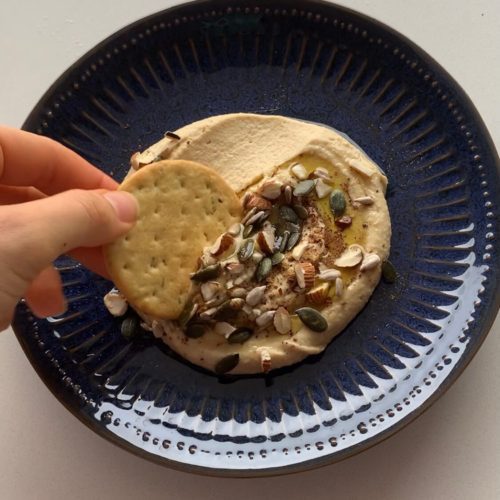
Quick and Easy Hummus
This hummus recipe is so quick and easy to make! It is perfectly smooth, requires only a handful of ingredients and can be made in a matter of minutes!
Prep Time 5 minutes mins
Cook Time 0 minutes mins
Total Time 5 minutes mins
Course Side Dish, Snack
Cuisine Mediterranean
Servings 4
Equipment
- Food Processor
Ingredients
- 1 (400g) tin Chickpeas Drained, liquid reserved
- 3 tbsp Tahini Hulled
- 1 Lemon Small, Juiced
- 1 cloves Garlic Peeled
- 1/2 tsp Salt
- 2 tbsp Olive Oil Optional
Instructions
- To your food processor, add all of the ingredients and blend for 30 seconds or so.
- If it's looking a little thick, add a tbsp or so of chickpea liquid and process again for another minute until smooth.
- Taste your hummus and adjust as necessary following the notes above.
- Pour out the hummus either into an air tight container or onto a plate if serving straight away.
- If you'd like, you can top it with a drizzle of olive oil, some extra chickeas, nuts, spices or fresh herbs.
OTHER RECIPES YOU’LL LOVE!

Hey! I’m Montana...
Mon Mack Food is my little space to share my passion for food. It is also a place to document the recipes I’ve created while cooking for friends and family! While it is now just a hobby, my absolute dream is to build this project into something I can one day call my job 🙂

